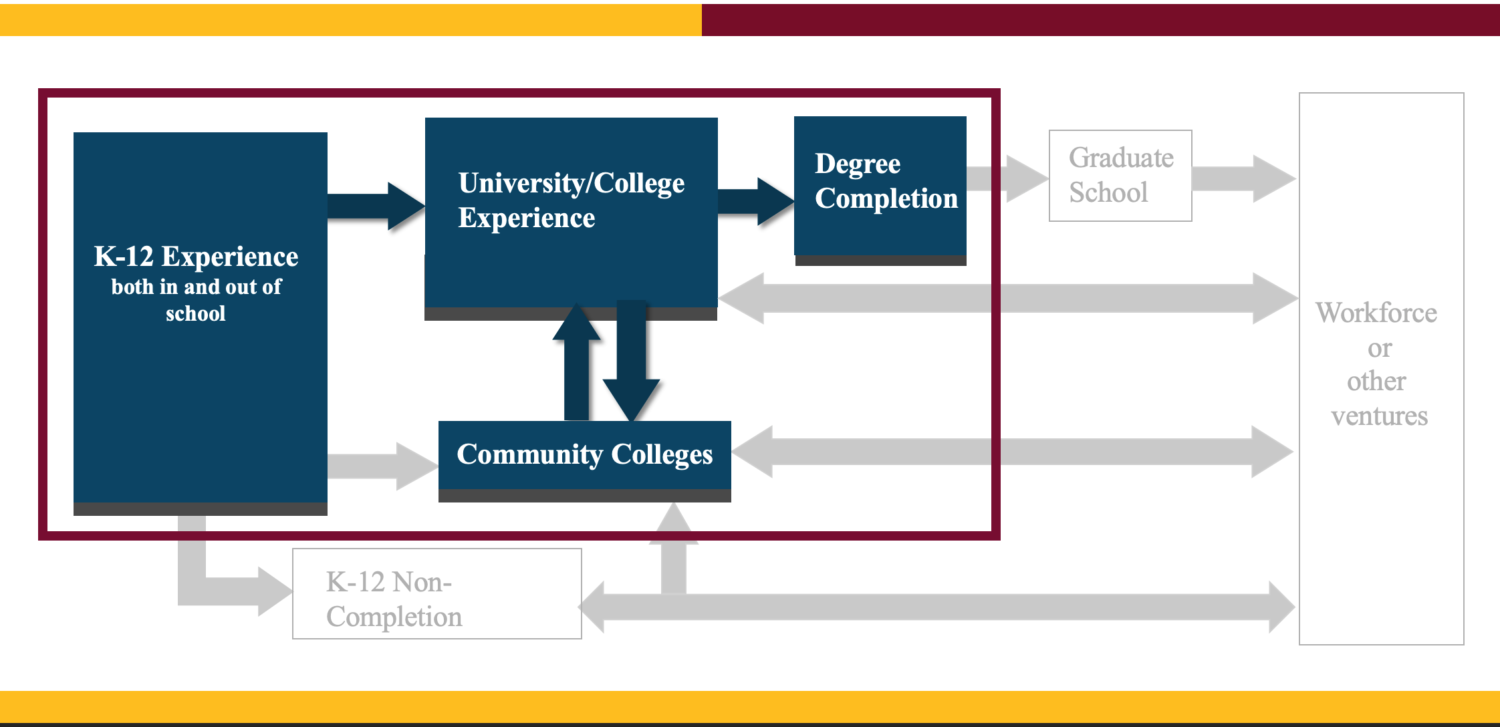My research objective is to broaden participation in engineering by focusing on issues pertaining to access and persistence for students’ who are minoritized in engineering based on their race/ethnicity, gender, socioeconomic status (i.e., first-generation college students and/or low-income), and those who live at the intersection of multiple identities. Systemic barriers disenfranchise minoritized students throughout their educational pathway. My goal is to understand the barriers that hinder access to engineering and persistence in engineering.
How do I examine issues of access in my research?
There are experiences that expose students to engineering-related fields that are not equitably available to all. As well students’ may be tracked into course sequences that systematically disenfranchise their capability to pursue an engineering degree. One of my research goals is to understand how students’ interest in engineering is triggered and sustained. As well, how does a triggered and sustained interest differ based on students’ social position (i.e., the implications of race/ethnicity, gender, and socioeconomic status).
How do I examine issues of persistence in my research?
Once students choose to enroll in an engineering program, how do we ensure that they persist to degree completion? I use multiple lenses to understand how persistence can be supported and how it is hindered, including engineering identity development, sense of belonging, and funds of knowledge.
Pathways into Engineering Education

My research focuses on broadening participation in engineering by examining issues of access and persistence. I examine access by focusing on two transition points: 1) students moving from secondary-education to post-secondary education and 2) students transition from community college to a four-year granting institution. I examine persistence by focusing on the lived experiences and through an analysis of motivational triggers or support mechanisms that students’ activate throughout their University/College journey.
Methodological approaches that help address my research goals:
Mainly, my approach to data collection involves administering survey questionnaires to undergraduate engineering students across multiple institutions. Currently, I have a dataset collected from 10, 4-year ABET-institutions across the U.S. of students studying engineering.
I also take advantage of the nationally representative databases that have been developed by the National Center for Education Statistics (NCES). The NCES collects longitudinal data of students enrolled in secondary school to postsecondary school and beyond.
I use statistical methods such as structural equation modeling, multilevel modeling, mediation/moderation process analysis, multiple/logistic regression, and an array of parametric/non-parametric tests to answer my broader question of access and persistence.
To a lighter extent, I also conduct qualitative interviews with a small sample of students to capture their experiences at a more granular level. Learning about students’ experiences and trajectories provides a deeper understanding of issues pertaining to access and persistence. Also, when warranted, students interview data provide a springboard towards the development of survey questionnaires.

